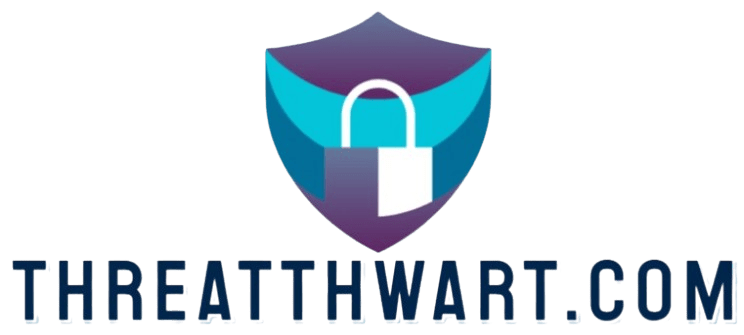common pitfalls in managed security services and solutions
In a world where cyber threats are becoming more sophisticated by the day, grasping the concept of Managed Security Services (MSS) services that help protect your business from cyber threats is crucial for you as a business owner aiming to safeguard your digital assets. Don’t let cyber threats catch you off guard!
This article provides an in-depth exploration of what MSS encompasses. It sheds light on common pitfalls like inadequate monitoring and outdated technologies, while also showcasing best practices to steer clear of these challenges.
You ll discover the vital factors to consider when selecting the perfect managed security service provider tailored to your specific needs. Act now to protect your business!
Contents
Key Takeaways:

- Ensure you have real-time monitoring to avoid being caught off guard by cyber threats!
- Outdated technology and processes can hinder the effectiveness of managed security services and solutions.
- Choosing a provider that offers customized solutions can ensure that specific security needs are met.
Understanding Managed Security Services and Solutions
Managed Security Services (MSS) offer a robust suite of cybersecurity solutions carefully designed to safeguard your organization from the ever-growing tide of cyber threats and security breaches.
As the realm of digital security continues to evolve, you encounter mounting challenges tailored to your unique needs. This necessitates new solutions that can pivot seamlessly in response to any situation.
Integrity360 stands out among the foremost Managed Security Service Providers (MSSPs), delivering bespoke services that cater to the varied demands of different sectors. This includes everything from physical security measures to proactive surveillance, ensuring you have comprehensive protection against potential risks.
Defining Managed Security Services and Solutions
Managed Security Services encompass a comprehensive range of security offerings delivered by specialized firms known as Managed Security Service Providers (MSSPs). All are designed to enhance your cybersecurity framework.
These services typically include proactive threat detection, real-time monitoring, and incident response critical components in today s ever-evolving landscape of cyber threats.
MSSPs are essential in helping you meet compliance standards by aligning your security practices with the regulatory requirements specific to your industry.
By customizing solutions that address your unique vulnerabilities and exposures, these providers equip you with the necessary tools and strategies to safeguard against potential breaches.
This tailored approach allows your organization, no matter its size or sector, to bolster its security posture while concentrating on core operations free from the incessant worry of cyber threats.
Common Pitfalls in Managed Security Services

Adopting Managed Security Services can greatly elevate your organization’s cybersecurity posture. However, you must be aware of common pitfalls that may compromise their effectiveness. Understanding the key features of effective managed security services is essential to avoid leaving you vulnerable to security breaches.
Factors like insufficient monitoring and incident response, outdated technology and processes, and a lack of customization can significantly impede your ability to safeguard against cyber threats.
You must recognize and address these challenges to truly harness the benefits offered by your chosen managed security service experience.
Insufficient Monitoring and Response
Insufficient monitoring and response mechanisms within Managed Security Services can leave organizations vulnerable. Understanding how managed security services mitigate risk is crucial, as timely threat detection is essential for mitigating potential cyber incidents.
When you neglect rigorous oversight, you may find yourself oblivious to lurking threats, leaving critical vulnerabilities unaddressed. For instance, without real-time monitoring, suspicious activities like unauthorized access attempts can slip under the radar, enabling attackers to infiltrate your systems unnoticed.
Incidents such as the 2017 Equifax breach serve as stark reminders of how gaps in oversight can lead to severe financial losses and irreparable reputational damage. Implementing effective incident response strategies is crucial, not only for damage control but also for restoring user trust and ensuring compliance with regulatory requirements.
Embracing robust monitoring solutions is vital for sustaining a secure operational environment.
Old Technology and Processes
One major challenge in Managed Security Services is the reliance on old technology. This can greatly limit your ability to manage vulnerabilities and respond to new cybersecurity threats, making it crucial to know what to expect from managed security services.
Cyber threats evolve rapidly. Sticking with outdated systems leaves your organization vulnerable and unable to keep up with emerging risks.
Without advanced tools, real-time monitoring and detection suffer. This weakens your overall security strategy.
New vulnerabilities may catch you off guard. Relying on cumbersome solutions makes it hard to effectively manage risks.
You need to invest in modern technology. This will not only improve your vulnerability management but also strengthen your cybersecurity posture.
Lack of Customization and Flexibility

A lack of customization in Managed Security Services can lead to security measures that don’t meet your organization’s unique needs, making it crucial to understand how to stay compliant with managed security services.
When solutions are tailored to your environment, they strengthen your defenses and enhance your resilience against threats.
For example, a financial institution needs strict compliance and fast incident response. A tech startup focuses on scalability to support growth.
By ensuring flexibility in your service agreements, security providers help you adapt to changing threats while managing costs.
This adaptability is crucial across various sectors, where security landscapes are constantly changing.
Avoiding Pitfalls: Best Practices for Managed Security Services
To navigate common pitfalls, adopt best practices that encourage communication and collaboration with your Managed Security Service Providers (MSSPs), including understanding how to evaluate managed security services effectively.
Creating a culture of continuous monitoring and tailored solutions significantly enhances your security posture against evolving cyber threats.
Effective Communication and Collaboration
Good communication with your MSSP is vital for timely incident responses and support during security events.
Maintaining open communication creates an agile response system ready to manage threats. Regular updates help your MSSP tailor strategies to your needs.
If a breach occurs, immediate dialogue allows for quick assessments and effective response strategies to minimize damage.
Establishing feedback loops can lead to continuous improvements, ensuring your security protocols evolve with the threat landscape.
Continuous Monitoring and Updating

Regularly monitoring and updating your security measures is vital. This proactive approach helps protect against new threats and weaknesses.
This method improves your ability to detect incidents quickly. It also helps you stay compliant with regulations.
By implementing automated tools that regularly assess and scan your networks, you can pinpoint weak spots before they escalate into critical issues. Frequent updates ensure that your defense mechanisms remain aligned with the latest threat intelligence, effectively minimizing potential entry points for cybercriminals.
Incorporating feedback loops enhances your resilience. This allows you to refine your strategies based on past incidents and current trends.
Customized Solutions for Specific Needs
Implementing customized solutions that address your specific security needs is essential for optimizing your Managed Security Services. This enhances flexibility and scalability in your security posture.
Investing time in developing tailored security measures strengthens your defenses. It also cultivates a proactive approach that aligns seamlessly with your operational goals.
For example, a healthcare provider might require specialized protocols to safeguard sensitive patient data. Meanwhile, a financial institution may prioritize compliance with stringent regulations.
By understanding and integrating these specific requirements, you can significantly reduce vulnerabilities. This level of customization enhances your security outcomes and promotes a more resilient environment, allowing you to anticipate threats and respond swiftly, ultimately protecting your assets and reputation.
Choosing the Right Managed Security Service Provider
Choosing the right Managed Security Service Provider (MSSP) is crucial and can dramatically boost your cybersecurity efforts. Make this decision wisely to safeguard your organization!
Several factors can profoundly impact the effectiveness of your security measures. Consider the provider’s industry experience, their reputation for reliability, and their capacity to customize solutions to meet your unique organizational needs all while ensuring compliance with applicable standards.
Factors to Consider
When choosing a Managed Security Service Provider (MSSP, a company that manages your security needs), assess key factors like available services, compliance with standards, and customer reviews.
Evaluate the variety of security services. Providers may shine in areas like threat detection or incident response.
Compliance with regulations, such as GDPR or HIPAA, is crucial. Non-compliance can lead to serious consequences.
Customer feedback offers real-world insights into a provider’s strengths and weaknesses. Consider these elements to align your security strategies with your goals.
Frequently Asked Questions
What are some common pitfalls in managed security services?
Pitfalls include poor risk assessments, unclear communication, and weak incident response plans.
How can poor risk assessments impact services?
They can overlook potential threats, leaving your systems vulnerable.
What are examples of unclear communication?
Examples include not informing clients about security updates or not providing timely incident reports.
How do weak incident response plans affect services?
They can lead to confusion during security incidents, increasing recovery time and costs.
What other pitfalls should clients watch for?
Other issues include inadequate staff training and using outdated security tools.
How can clients avoid these pitfalls?
Clients should research providers, communicate their needs, and regularly evaluate service effectiveness.
Don’t wait! Act now to ensure your security needs are met effectively.






